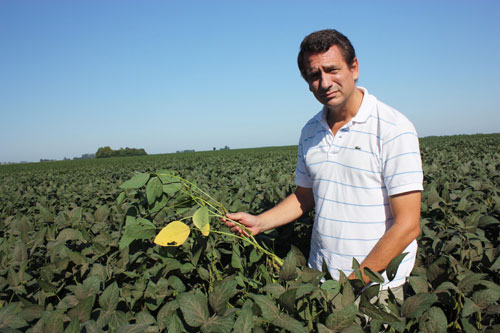Federico Rolle plans to use a new no-till drill this season

I am planning to use my new no-till drill for this year’s crop, which I bought a few months ago costing US$ 87,500 (£55,685). The decision was not easy, as Argentina is a leading manufacturer of no-till and min-till drills with a wide range of models on offer.
The approaching start of the grain season prompted the drill manufacturers to launch many new machines and update existing models. There are machines for every situation offering wider working widths, more choices in mechanical or pneumatic seed distribution, as well as precision farming tools allowing variable rates of seed and fertiliser across fields.
In the end, I opted for a Crucianelli drill, planting 16 rows at a distance between of 0.525m, giving a total working width of 8.4m. I have the option to add four additional rows, as well as band applying fertiliser. This seeder complies with the three main principles of the no-till system: soil cut with a serrated disc to result in a small strip of cultivated soil (strip tillage); a furrow is then created to place the seed (seeding unit and placement); and a following wheel firms down and covers the seed (press wheel).
While it is important to choose the right drill, correct operation is even more important as failures can lead to a substantial loss of yield. In Argentina, it is common to use contractors to carry out the seeding work, with priority often given to price with inadequate attention paid to quality and speed of sowing. This can lead to poor drilling in more than 40% of the planted area in the country.
The main reasons for loss of yield are planting/establishment failures, double seeding leading to more competition between plants of the same crop, the wrong plant density for the specific field, poor choice and rate of fertiliser application and the wrong row spacing. Most of our crops are precision planted – so this really shouldn’t be a problem.
Farmer focus: Federico Rolle
